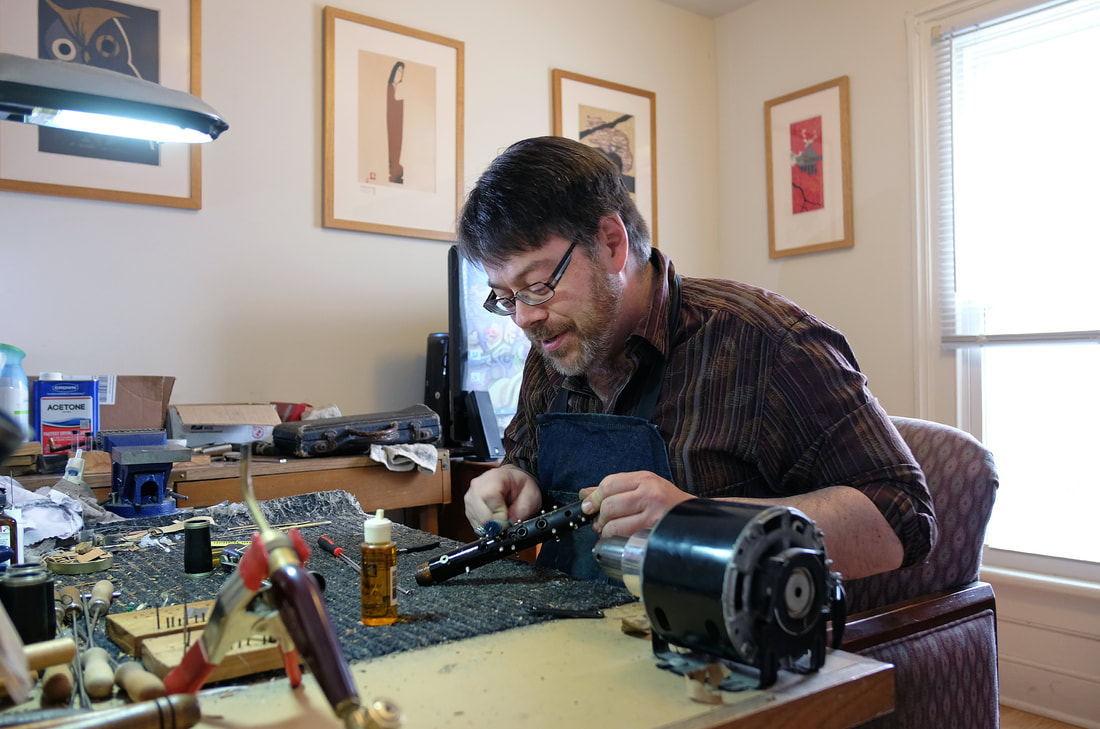 For years, I used natural reeds on clarinet and saxophone. I tried different brands, different strengths, different cuts - all of which changed every time I changed mouthpieces, of course - and invested a lot of time and even more money in the pursuit of the 'perfect reed'. The conclusion I've come to is twofold : 'there isn't one' and 'if there were, it would be called Fibracell'! After years of throwing out 1/4 of the reeds in a box, or sanding and trimming to save stuffy, poorly cut or worn out reeds, I gave up and tried Rico Plasticovers. They are definitely brighter, longer lasting and more free-blowing, but I found grading inconsistent and had trouble with 'chirping'. I tried Bari clear plastic reeds and found them durable, but tone was monochromatic and they were best outdoors or in a situation where tone wasn't as important, like marching band. Finally, I found Fibracell. These are a resin/Mylar composite that look and feel very much like natural cane, but the resemblance ends there! They are durable, consistent, don't require soaking, don't get soggy, don't split, crack, warp or squeak and are more free-blowing (important for Jazz and Commercial players who want a brighter, more open sound) than cane. Each reed costs about $9, but will last for months. Many pros and teachers now use them, and I've had good feedback from students as well as improved tone and performance in my playing. There are a couple of mitigating factors that need to be taken into consideration, however: 1) they run a little softer than cane reeds, anywhere from 1/2 to a full grade. So, your tenor sax 2.5 will become a 3, and your clarinet 3 may become a 4. And 2) I find the stiffness ratio of tip to heart is a little different than cane, so intonation and articulation will have to be adapted accordingly. Regular practicing over a period of a couple weeks should make for a good transition; I wouldn't take one out for the first time on a gig! I know these are more popular with saxophonists than clarinetists, but I recommend them to anyone looking for a more consistent, free-blowing reed. Especially for doublers, they can't be beat! Buy a couple in different grades, try them for a couple weeks and see if you don't notice an improvement in your tone and intonation. Then, throw away all those half-full boxes of half playable reeds and don't look back.....
4 Comments
Richard Downey, USA
6/6/2013 07:38:35 pm
I am a 79 year old amateur clarinet player, addicted to New Orleans jazz. My practice schedule is limited to "When I feel motivated!' . Because of that, I've been using Fibracell Clarinet reeds (no need to slobber over the reed in order to practice". However. I have observed an interesting thing about these reeds! I began to notice a "layer of plastic", on the mouthpiece side of the reed. On some of my "more mature" reeds, I found a layer of "plastic film" which I was able to peel away from the reed, and what was left was a sticky layer of????
Reply
jeremy
6/7/2013 09:48:56 am
Richard,
Reply
Julia
7/17/2015 11:27:26 am
I've only tried fibracells once, and i didnt like them. The reed I got sounded airy.
Reply
jeremy
7/17/2015 12:50:30 pm
might've been the grade - sounds like the reed was too stiff!
Reply
Your comment will be posted after it is approved.
Leave a Reply. |
Archives
February 2024
AuthorThe Licorice Shtick Blog is the creation of the Vintage Clarinet Doctor, a Winston Salem, NC based woodwind instrument repair shop specializing in vintage and antique clarinets, saxophones, and the occasional flute. Categories |

 RSS Feed
RSS Feed